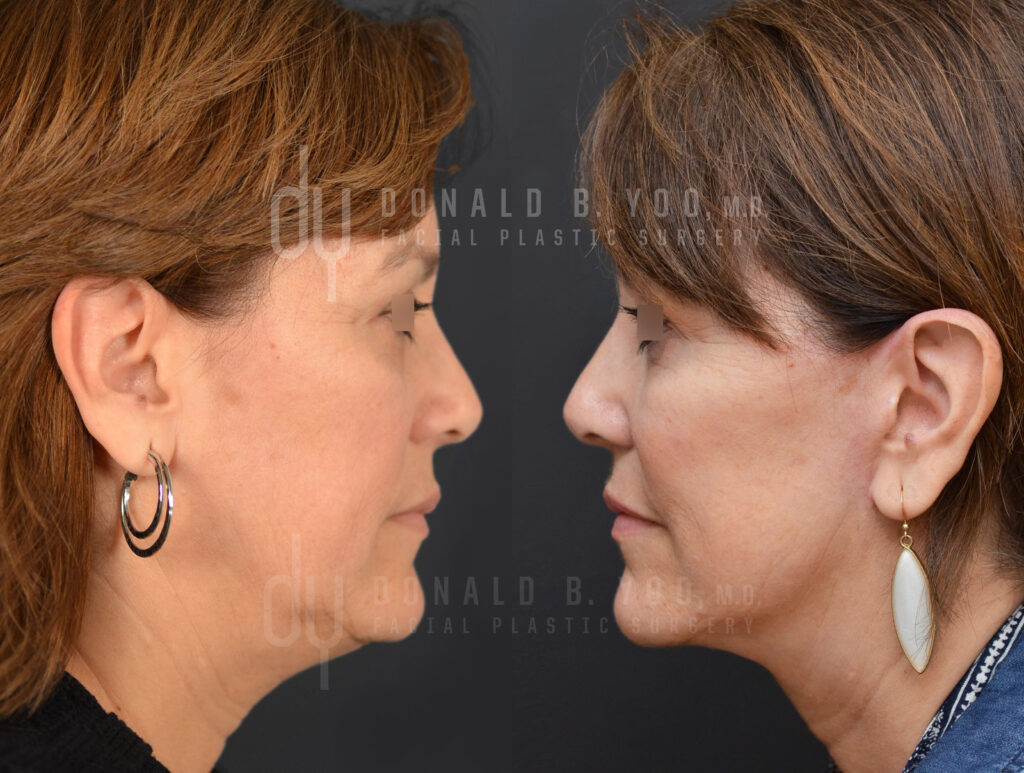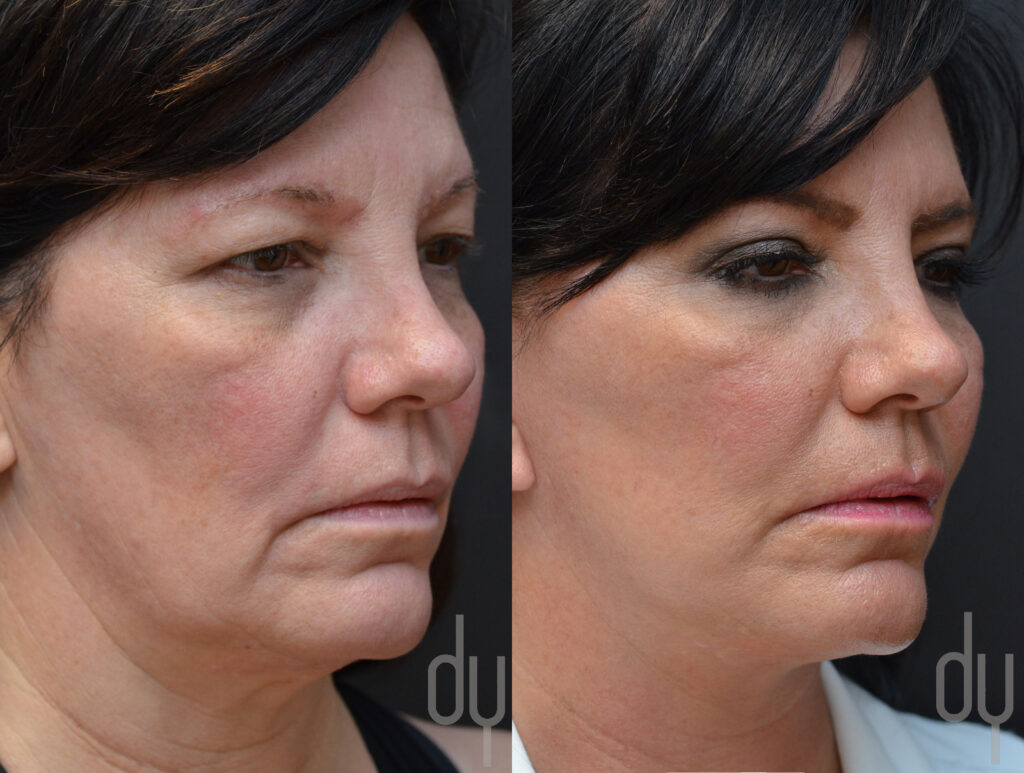
Facelift, or rhytidectomy, is a common facial plastic surgery procedure performed to address the signs of aging by repositioning ptotic and sagging tissue, removing excess skin and facial fat, while restoring volume to deficient areas. The overall effect is a more youthful appearance to the midface and cheeks, jawline and neck.
How long does a facelift last?
A facelift reverses many of the signs of aging to the mid-face, lower-face, jowls, jawline and neck, but does not stop the process of aging. It can be thought of as reducing one’s appearance by ~10-15 years. Patients who are very proactive about addressing the signs of aging will plan for two facelifts in their lifetime.
What is the best age to have a facelift?
A well-performed facelift can reasonably be expected to last for 10-15 years. With this timeline, the most typical age to undergo a facelift is 45-50, though this will vary based on individual factors such as genetics, lifestyle and cumulative sun exposure. Patients with unusually lax skin and early signs of facial aging may even consider a facelift as early as 35.
Is a facelift very painful?
Facelift surgery and rhytidectomy is not typically painful, as much of the face and neck is actually somewhat numb immediately after the procedure, due to the dissection required to mobilize the skin and soft tissue in the face and neck. Range of motion of the neck is slightly limited in the short term, and may feel tight, leading to a sensation of tenderness. Most patients will experience only minor discomfort after a few days or recovery.
How much does a facelift cost?
The cost of a facelift will depend on the skill and experience of your surgeon, as well as your individual anatomy and specific aesthetic goals.
What types of facelifts are there?
While many variations of facelift and rhytidectomy techniques exist, most contemporary surgeons will favor an approach that incorporates a deep-plane dissection as its foundation, while incorporating specific techniques to best address the neck, mid-face and periorbital areas that will suit the individual patient’s aesthetic goals and the patient’s unique anatomy.

 Contact Us
Contact Us